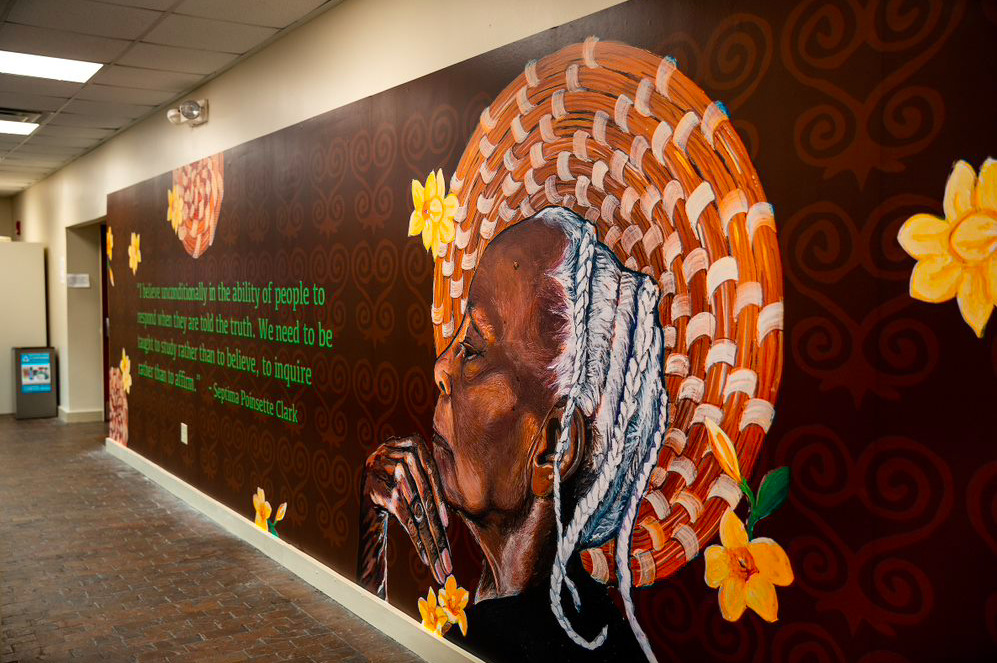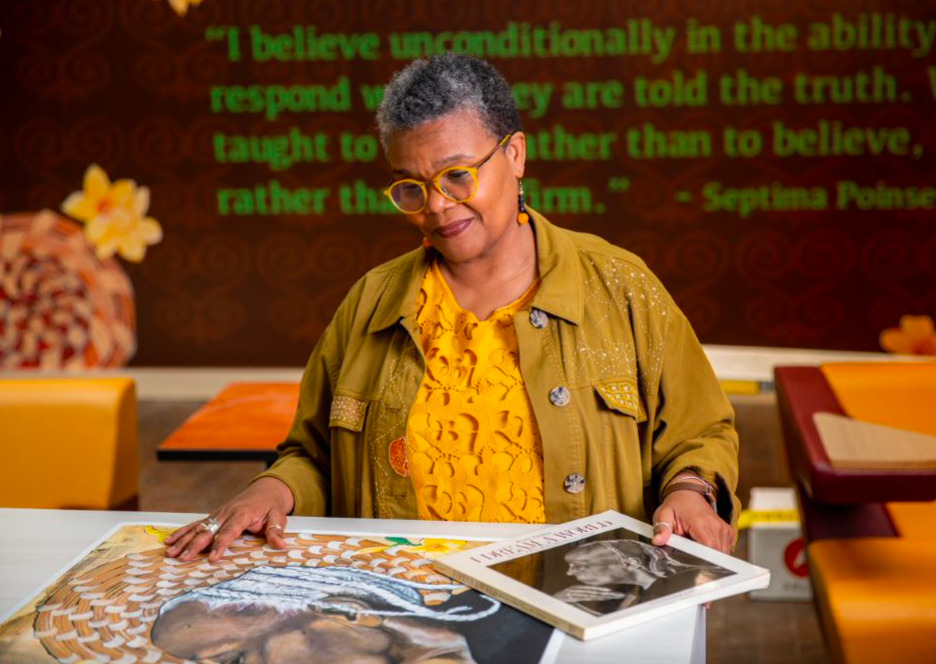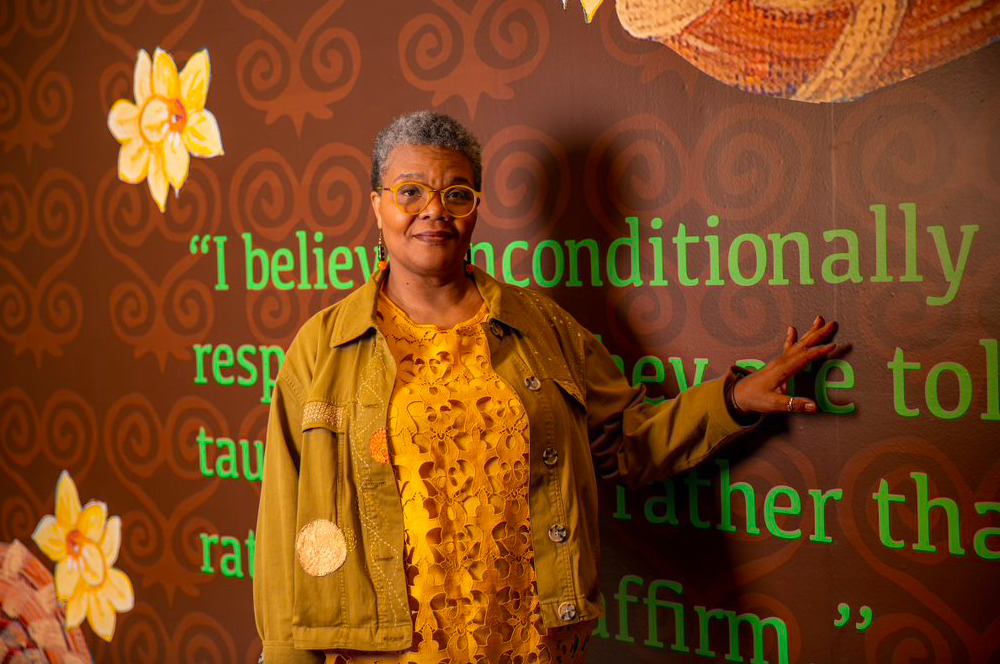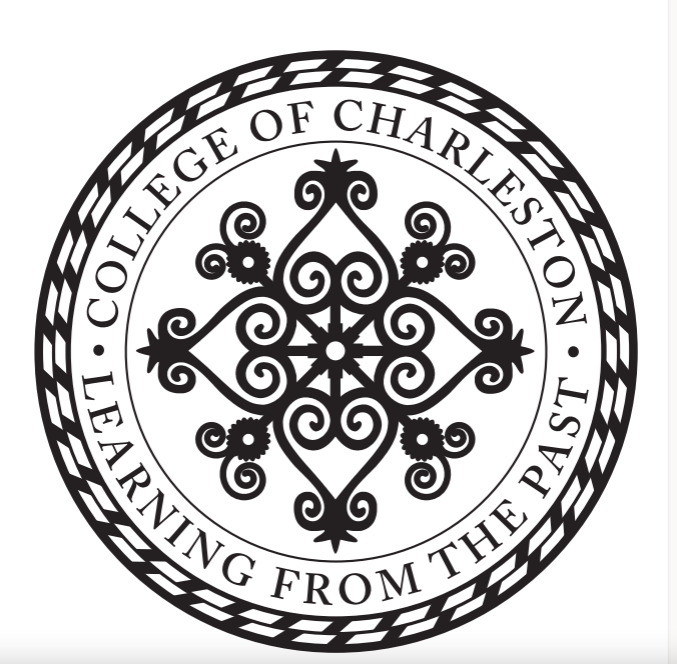
As a tribute to Clark’s life, a 30-foot mural was installed in 2023 beside the Septima Clark Auditorium. The mural, based on Natalie Daise’s “Saint Septima with Carolina Jasmine,” is also a call to action.
Sweetgrass and Carolina jasmine let us know that we are, indeed, in the Lowcountry. But the presence of Septima Poinsette Clark—composed, serene, contemplative—now in the halls of the College of Charleston’s Education Center reminds us of something more profound: our moral imperative to pick up the mantle of the yet-unfinished freedom struggle, both in the Lowcountry and in the world writ large. The new mural of Septima Clark, installed by the Committee on Commemoration and Landscapes in February 2023, celebrates her work as an educator and civil rights organizer, but it also calls for us to follow in her footsteps and be better for it.
I recently spoke to Natalie Daise, the artist who designed the mural that now graces the Education Center’s walls. She told me that she had kept a copy of Brian Lanker’s book, I Dream a World: Portraits of Black Women Who Changed America, for years before Lanker’s stunning photograph of Clark, which appears on the book’s cover, inspired the first portrait in her Sweetgrass Saints series: “Saint Septima.” Daise’s portraits in acrylic and gold leaf honor African American icons in the Lowcountry, from Septima Clark and Robert Smalls to Harriet Tubman and Charlotte Forten. Behind each icon Daise paints halos of woven sweetgrass, and the portraits are adorned with starlit skies, doves mid-flight, and flowers that cascade from the heavens. These are saints, not merely in the Catholic sense of the word, but because of their moral stands against oppression—the path to liberation was not easy (far from it), but it was righteous.
Daise gravitates to painting portraits out of a love for hearing and telling stories: “so many stories are stored in the fold of an eyelid and the curve of a lip. And I love hands—how they store potential energy that might spring any moment into action.” In “Saint Septima,” Daise captures the depths of Clark’s grace and power—her chin lightly rests on her fingertips, her head is held high, her eyes look to what is coming up ahead with the kind of quiet resolve that embodies what James Baldwin once told Nikki Giovanni: “What you have to do is make it possible for others to live. You know, that’s the only reason to be here.” Each of Daise’s brushstrokes felt, she said, “like meditation,” a testament to her sensibilities as an artist but also her admiration and gratitude for her ancestors who made it possible for her to live, in the deepest sense of what it means to live and to be.
When I first saw Lanker’s photograph of Clark and then Daise’s painting and mural, I thought about Kara Walker’s art, in particular her disturbing, large-scale installations of scenes from the antebellum South rendered in black silhouettes. This resonance was merely a matter of form, however. Walker’s silhouettes are, as she puts it, a “blank space that you [can] project your desires into.” Though Lanker and Daise depict Clark in profile, unlike Walker’s silhouettes, many of which are also done in profile, Clark is no empty vessel or black void. Clark refuses that void. She, in her quiet dignity, lets us know unequivocally who she is and the legacy she has left to us. She inspires us to imagine a more just and beautiful world. She shows us that we can dismantle systems of oppression that harm so many people for the benefit of the most powerful among us. For this reason, the installation of this new mural is not merely a cosmetic change to the campus. It is not just a thing of beauty. It is a vital and necessary reminder of what we, as a campus, as a nation, as citizens of the world, can become.
Images




